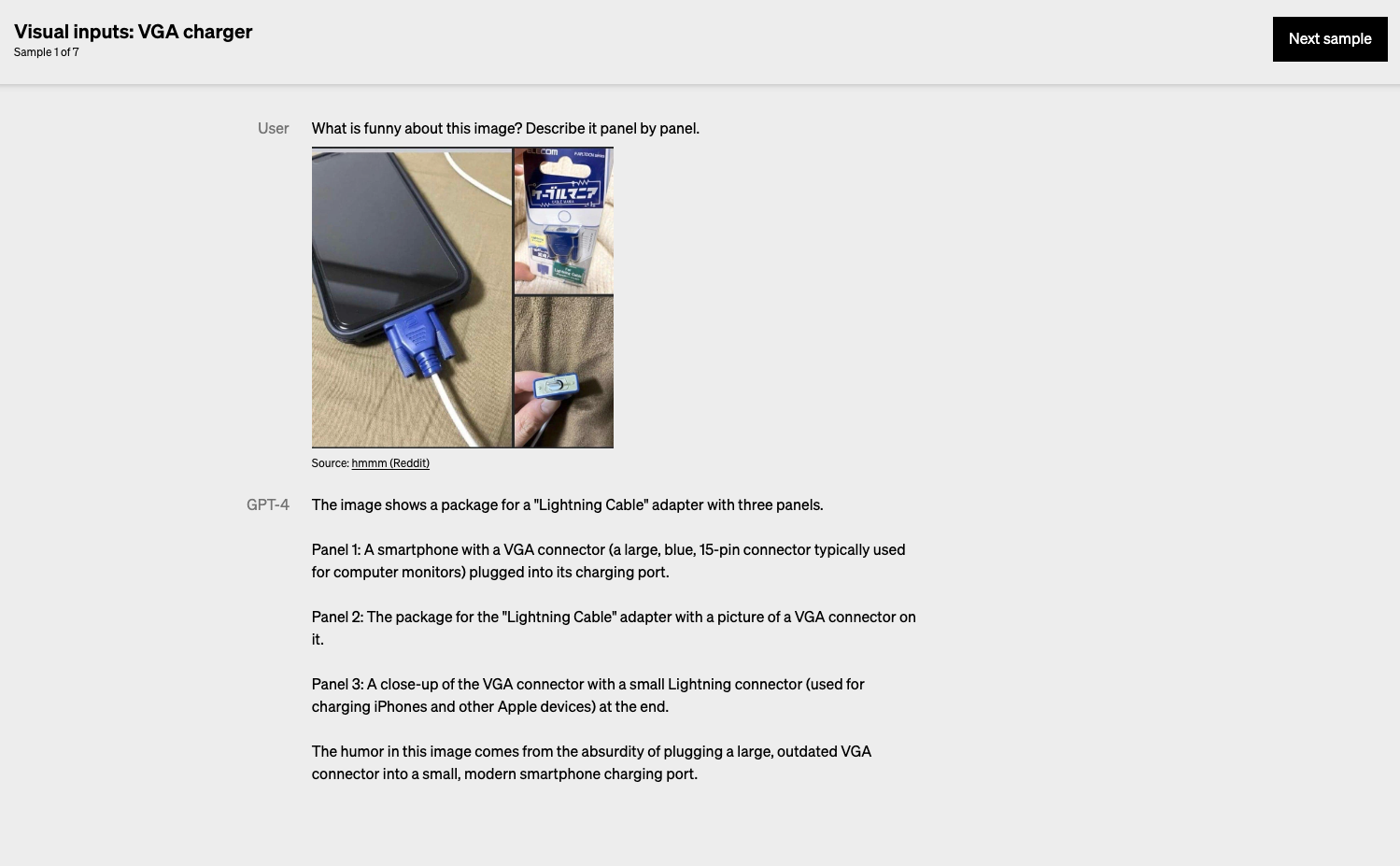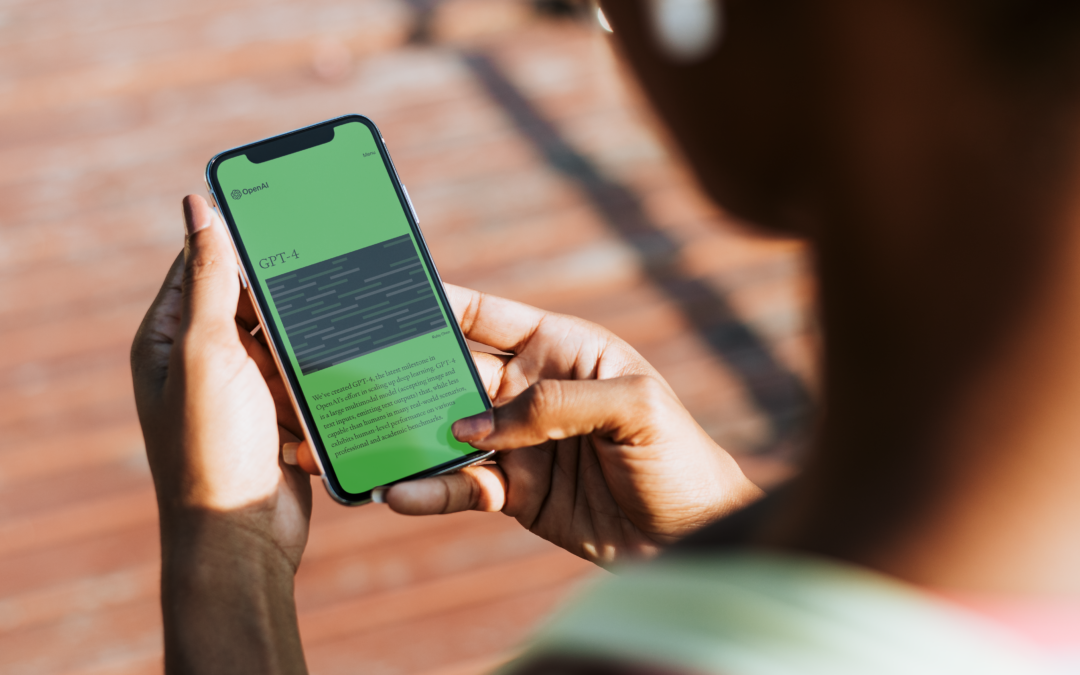The new version released recently is able to take an image and emit general information about that image. This capability isn’t available with GPT-3.5.
GPT-3.5, the current model, has impressed researchers and developers alike with its ability to generate coherent and plausible text across a wide range of tasks. However, the technology continues to evolve and the next iteration of the model, GPT-4, is ready to take the user experience to the next level.
What is GPT-4?
GPT-4 is the next iteration of the GPT series, which is expected to have even more impressive capabilities than GPT-3.5. Like its predecessors, GPT-4 is a language model based on transformer architecture. However, it will have a significantly larger number of parameters, making it even more powerful than GPT-3.5.
Capabilities of GPT-4
The latest version has several capabilities that make it a powerful tool for a variety of applications including:
Improved Natural Language Processing
The natural language processing capabilities are said to be significantly approved. The AI tool is reportedly able to understand and generate human-like text with even greater accuracy and coherence than GPT-3.5. This makes it a valuable tool for various natural languages processing applications, such as language translation, sentiment analysis, and chatbots.
Rather than having a fixed verbosity, tone, and style, the updated version allows users to describe those details in the “system” message. By doing that, the AI will always answer you in the style you prefer.
Advanced Question-Answering Abilities
Creators say GPT-4 has advanced question-answering abilities. It can understand complex questions and provide accurate and detailed answers. With this capability, those who work in customer service, research, and education can use it to their advantage.
Users can now attach an image, ask the AI tool a specific question about it, and get a generated text response.

Better Multilingual Capabilities
With better multilingual capabilities than GPT-3.5, this opens the door for more diversity and inclusion. Creators updated the tool to be able to understand and generate text in multiple languages with even greater accuracy and fluency. This capability makes it a valuable tool for various applications, such as language translation and communication with multilingual audiences.
Duolingo has partnered with OpenAI to use GPT-4 to give its users a more immersive and flexible conversation experience.
Improved Fine-Tuning Capabilities
One of the biggest flaws of the previous version of ChatGPT was its fine-tuning capabilities. The latest update allows the tool to adapt to specific tasks more effectively. With this capability, it becomes a valuable tool for tasks such as text classification, sentiment analysis, and personalized recommendations.
The program has the capability to learn your writing style, making it easier for you to stay consistent in your work.
Better Knowledge Representation
As creators advanced the tool’s knowledge, it can now understand and represent complex concepts and relationships more accurately and effectively. Those who work in education, research, and knowledge management could find this update useful.
While the distinction between the previous and updated versions is subtle in casual conversations, users will notice a significant upgrade when they ask for more nuanced instructions. OpenAI says GPT-4 passed a simulated bar exam with a score around the top 10% of test takers. You can compare this to GPT-3.5, which scored around the bottom 10%.
Challenges and Concerns
With everything in life, there are still some challenges and concerns with GPT-4. One of the main concerns is the ethical implications of such a powerful language model. GPT-3.5 has already raised concerns about the potential misuse of the technology, and GPT-4 is expected to be even more powerful.
Educators have raised concerns about the misuse of the AI language model by students. They say students are using it to complete writing assignments. There’s also a concern about the accuracy of the information the system provides to users. OpenAI says the updated version is 40% more likely to produce accurate information than its predecessor. Creators say it’s also 82% less likely to respond to requests for disallowed content.
According to OpenAI’s website, some of the chatbot’s’ limitations include social biases, hallucinations, and adversarial prompts. Developers say they are working to address these limitations. Take the information it gives you with a grain of salt and check its accuracy.
Another challenge is the computational resources required to train and run such a large model. GPT-4 has a significantly larger number of parameters than GPT-3.5, which will require even more powerful computing resources to train and run.
Opinion
I’ve had friends and former colleagues question the ethics behind the chatbot, but they also haven’t tried to use it yet. So how can you form an opinion about something before you try it out?
I believe like most things in life, this tool is what you make of it. If you embrace it and use it to your advantage like I have, you’ll find that it’s helpful, but not perfect. If it scares you or you think you’ll be replaced by the AI tool, I recommend doing more research into it.
GPT-4 pulls information from research, studies, and articles that people like you and I have made.
Remember that above all else, this is a tool meant to help with content creation, not to replace an actual human. GPT-4 is available for ChatGPT Plus users and as an API for developers to build applications and services.

